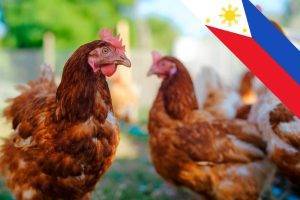H5N1, also known as bird flu, has once again become a cause for concern as it resurges in Cambodia.
This highly contagious viral infection, H5N1, primarily affects birds, but certain strains can also infect humans and other animals, leading to severe health complications. With its potential to cause widespread outbreaks, it is important to understand the reasons behind its resurgence and take necessary measures to prevent its spread.
Numerous Hospitalisations In Cambodia Raise Alarm Bells
The World Health Organization (WHO) has warned that H5N1 has reappeared in Cambodia, with two children testing positive for the H5N1 virus in February 2023.
According to the WHO, the two children, aged 10 and 12, are from different provinces in Cambodia and are not related. They were both hospitalized with severe respiratory symptoms and are now recovering. This is not the first time that Cambodia has experienced an outbreak of avian flu. The country has reported several cases of the virus in both humans and birds since the first outbreak in 2004.
What Is H5N1?
The H5N1 virus, also known as bird flu, is a highly pathogenic virus that primarily affects birds. It can also infect humans who come into contact with infected birds or their droppings, and can cause severe respiratory illness and, in some cases, death. WHO has urged Cambodia to take immediate measures to control the spread of the virus, including strengthening surveillance and reporting systems and conducting active case-finding in high-risk areas.
The organization has also advised people to avoid contact with sick or dead birds and to properly cook poultry and eggs before consumption. Additionally, health authorities in Cambodia are conducting investigations to identify the source of the infection and to prevent further spread of the virus. WHO has emphasized the importance of early detection and rapid response to control the spread of the virus and to prevent it from becoming a global threat. It has called on all countries to remain vigilant and to report any suspected cases of avian flu immediately.
The Last Avian Flu Outbreak
The last time avian flu spread on a large scale was in 2016. According to the World Health Organization (WHO), the H5N1 strain of the avian flu virus had infected 844 people in 16 countries since 2003, resulting in 449 deaths.
The most extensive outbreak of avian flu occurred in 2004 in Asia, where it spread rapidly among poultry and infected humans. The H5N1 virus strain caused severe respiratory illness in humans and resulted in a mortality rate of over 50%. In 2013, a new strain of avian flu, H7N9, emerged in China, causing severe respiratory illness and pneumonia in infected individuals. From March 2013 to May 2020, a total of 1,567 laboratory-confirmed human cases of avian influenza A(H7N9) were reported to the WHO, with a case fatality rate of approximately 39%.
Overall, the spread of avian flu has had significant consequences on public health and the global economy, resulting in widespread culling of poultry and significant losses for the poultry industry. It emphasizes the importance of taking preventative measures to curb the spread of the virus and protect both animal and human health.
What Is H5N1?
H5N1, also known as bird flu or avian flu, is a type of viral infection that primarily affects birds. There are several strains of avian flu virus, some of which are more dangerous than others. In rare cases, avian flu can be transmitted from birds to humans, and it can potentially cause severe illness or even death.
Avian flu viruses are classified as type A influenza viruses, and they belong to the Orthomyxoviridae family. They are highly contagious among birds and can spread rapidly through poultry populations. Some strains of avian flu are more virulent than others and can cause severe illness and death in birds.
Symptoms Of Avian Flu
In humans, avian flu infections are rare, but they can occur after close contact with infected birds or contaminated surfaces. Symptoms of avian flu in humans can range from mild to severe and may include fever, cough, sore throat, muscle aches, and difficulty breathing. In rare cases, avian flu can lead to severe respiratory illness or even death.
Public health officials closely monitor avian flu outbreaks to prevent the spread of the virus and to minimize the risk of human infection. Measures such as culling infected birds, restricting the movement of poultry, and implementing proper hygiene and safety procedures can help to control the spread of the virus. Vaccines are also available for some strains of avian flu, although they are primarily used in poultry rather than humans.














